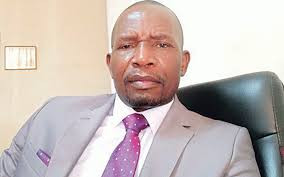
Leadership is not about a position. Neither is it about a title. Rather, it is about what leaders do. What leaders do can make or break an organisation. When leaders act in a manner that recognises that workers are not just statistics, but individuals coming from diverse backgrounds, families and communities, they become popular with subordinates. This opinion piece intends to focus on the concept of ownership of a leader by their followers, or workers. Leaders can either be owned or disowned by workers. Workers may not necessarily choose their leaders. One way or the other, workers must work with their leaders. They are not spoiled for choice in that regard, but what they can do is either follow or chase their leaders. When workers follow their leaders, they work with a sense of obligation and pride and when they chase their leaders they just work with a sense of obligation (duty calls). Their hearts will not be in the workplace. What leaders do in terms of interacting with workers determines ownership of leaders or creates emotional distances between leaders and workers. When leaders commit time and energy to interacting with their workers, workers relate with them with a sense of ownership. The ownership experience of leaders is a key building block of organisational culture. Arguably, leaders are responsible for either creating conducive or toxic workplaces. When a leader understands that business is not just transactional but also relational, communal, ethical and sacred, he or she endears himself or herself to workers — workers own him or her.In the process, they claim with confidence that “our leader this, our leader that”. For example, a leader who knows, understands and appreciates that female employees may experience menstrual pain that may interfere with their performance may have those female workers coming to realise that they are part of an organisational culture that does not just manage business on spreadsheets and screens, but on lived realities of female workers. Female workers under such typical leadership will therefore invest time and energy in amplifying output.Leaders who approach workers as human beings and not statistics will understand that performance is tied to multiple factors because their workers do not live in a social vacuum. Workers may come to work with unresolved social or domestic issues that may eclipse their performance. Unresolved social issues may affect mental health, thereby causing stress and anxiety at work. A good leader should be alert to behavioural patterns that may be disruptive to performance, and should try to understand the structural, behavioural and attitudinal conditions conducive to the presenting picture.Human beings are not economic assets. Neither are they data points that should be understood in abstraction. They are affected by climatic stressors, politics, family or social, spiritual problems, economic turbulence and conflict, among other things. When human beings go to work, they carry their problems with them. Leaders cannot separate them from their problems. The best the leaders can do is to have an insight into their problems and work towards helping workers resolve them, so that they can minimise split attention. Split attention is corrosive: it saps energy and therefore interferes with performance. Leaders who are worth their iodised salt strive to engage workers in conversations that may help with solutions to problems that may disrupt output.The same scenario obtains in a teaching or learning environment where one finds leaders at various levels. These can be the head of school superintending over his or her workforce, teachers overseeing their classes and heads of departments. Where a teacher knows his or her students by name, the students relate very well with the teacher and where a head of school takes time to interact with his or her staff members as individuals and as a collective, the teachers are bound to have an ownership experience of the head. For example, early childhood development (ECD) learners have ownership of their teachers. For them, no one knows better than their teachers. This is because their teachers come down to their level and treat them as unique individuals who need attention and time for play, folklore, stories, games and one-on-one interaction where and when necessary. ECD teachers are not only teachers but leaders. What they do affects the growth and development of these children. Human beings place a premium value on physical interaction as compared to abstraction. Similarly, in an institution of higher learning, when a student fails to score a good grade, it is not just a question of marking the student down. There is a need to understand the prevailing circumstances when the student puts together his or her assignment. In the workplace, it is important to appreciate that the leader is dealing with human beings with emotions, not statistics. A worker who has challenges of food and nutrition security will not perform to the expected standard, hence the need for the leader to approach the worker with a sense of understanding that unless the worker’s problem is resolved, he or she may not offer his or her best at the workplace.Ownership of a leader is a function of how leaders treat their workers. Workers will own their leader if the leader commits time and energy in understanding them as individual beings and not as metrics. Aribino writes in his personal capacity.






